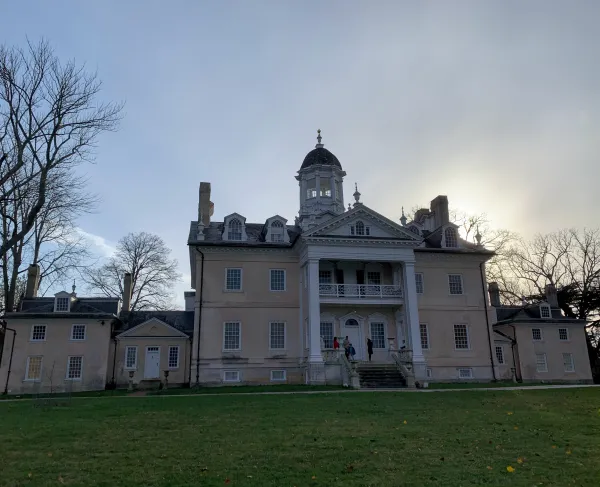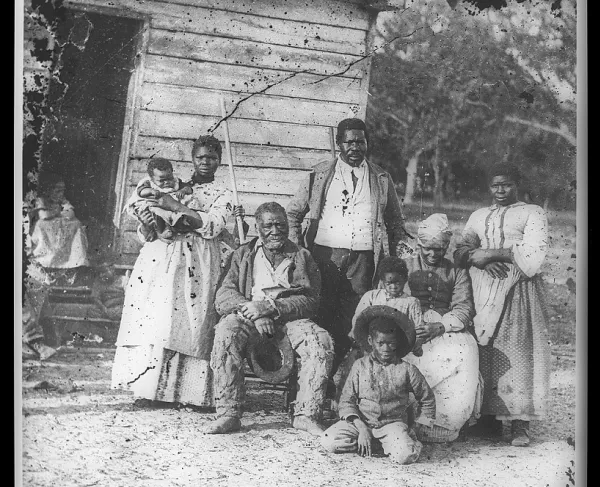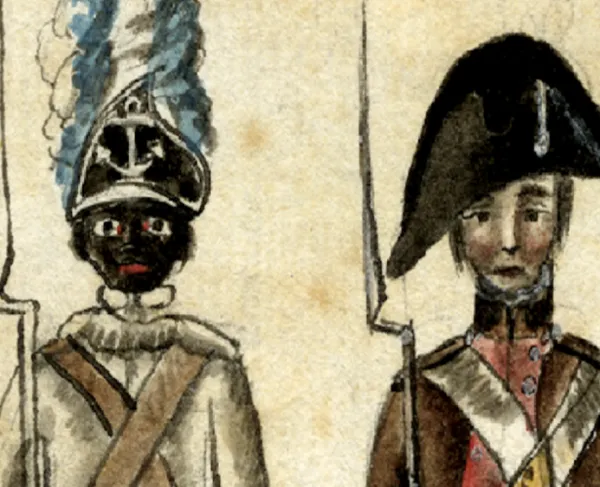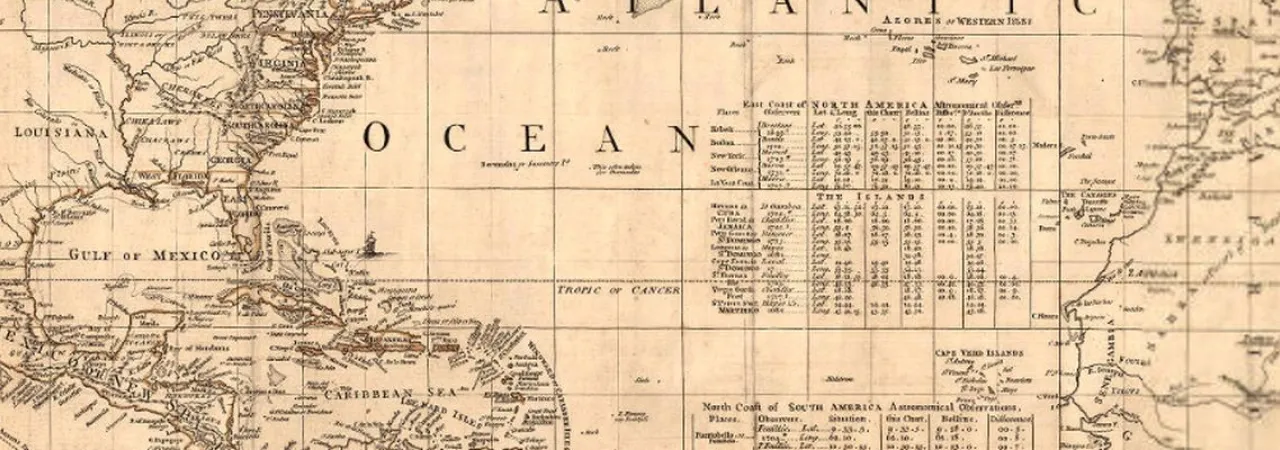
In the year 1730, in the region of present-day Senegal, a man named Ayuba Suleiman Diallo traveled down to an English port on the coast to purchase paper, likely manufactured in Europe, an important item for his Muslim cleric father. To purchase the paper, his father had given him a pair of slaves to trade, but on the way home, however, Ayuba encountered a roving band of Mandinka raiders who took him prisoner and sold him into slavery to an English captain in turn, making him one of the many millions who fell victim to the Atlantic Slave Trade. Ayuba’s account, written down years later as Some Memoirs of the Life of Job, the Son of Solomon…Who was a Slave About Two Years in Maryland…, does not describe the likely atrocious journey across the ocean to North America, where, on average, between 12% and 15% of slaves crossing the Atlantic died while in transit. The memoir is useful nonetheless for its brief glimpse into how the slave trade actually operated on the African continent. Far from existing in isolation, the Atlantic Slave Trade was interwoven into a vast, intercontinental mercantile system commonly called the Triangular Trade.
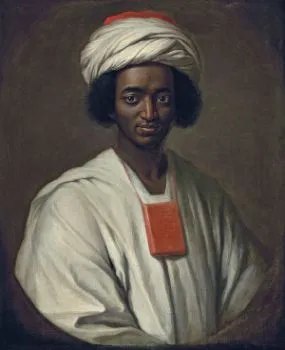
When Europeans began sailing further out onto the open ocean in the early-to-mid 15th century, they discovered that navigating the ocean required utilizing a series of perpetual wind cycles and ocean currents, such as the North Atlantic Gyre and the Gulf Stream. Portuguese navigators in particular established a kind of triangular route while exploring the western coast of Africa with the aid of the Northeast trade winds that dominate the tropics, returning to Europe not by reversing course, but sailing northwest to the Azores and catching the Southwest Westerlies home. Christopher Columbus himself became the first person to apply this principle to a transatlantic voyage, sailing north after making landfall in the Caribbean before returning to tell the world his discoveries. It is possible that Columbus also brought enslaved Africans with him on his first voyage, making him the first “triangle trader,” and as the various European powers began establishing their colonies in North and South America, introducing cash crops like sugarcane and adopting others like tobacco. In the meantime, the process of triangular maritime routes became the standard practice of transatlantic navigation.
As it happened, this process of navigation between Europe, Africa and the Americas fit in quite well with the prevailing economic theories on the purpose of colonies and international trade in the Early Modern Era. The overwhelming majority of colonies in the New World were not designed to exist as their own self-sustaining communities, but to act as production facilities for raw materials, particularly cash crops grown on massive plantations in hotter climates like cotton, sugarcane, chocolate, tobacco and coffee. Once harvested and processed, these crops were then sold and shipped to Europe where they were processed into finished goods. Often these goods were luxuries items made to be consumed by Europe’s elite classes, like chocolate which did not exist in a solid form yet, but as the continent inched towards the Industrial Revolution in the 18th century, lower class people began consuming sugar and coffee as useful stimulants: “fuel for the labor,” as one historian put it. Finished products that went unconsumed, however, were shipped South to Africa in order to purchase slaves, which then were carried back to the New World colonies to continue the harvesting of cotton, sugarcane, chocolate, tobacco and coffee.
But why all the way to Europe as the designated end point and as the center of production for finished goods? And why only to their own home countries? Surely wealthy individuals in Williamsburg, Vera Cruz, or Saint-Domingue enjoyed chocolate and coffee just as much as in London, Madrid or Paris. What prevented an English merchant from buying sugar in Dutch-ruled Aruba and selling it in Portuguese Brazil? The reason is that any of those practices ran up against the economic theory of Mercantilism, which in its simplest terms advocated the accumulation and circulation of precious metals (or bullion) within a single country’s market but taken to its logical extreme believed that countries should maximize exports and minimize imports under the assumption of international trade as a zero-sum game. Using policies such as high tariffs on imported finished products, and sometimes simple bans on certain exports, the European powers saw any gain their neighbors made in trade to be their loss, and they applied this principle to their colonies as well.
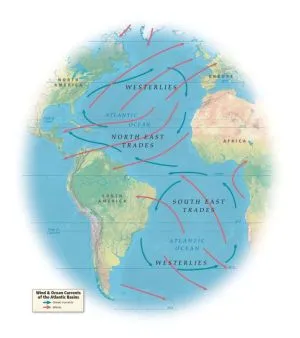
Most European colonies in the New World, especially cash crop producers, were completely banned from trading with either their colonial neighbors or European ports that did not belong to their mother countries. In Britain, this was done through legislation such as the Navigation Acts of 1660, which completely banned foreign merchants from purchasing or selling goods in any English port. Customers gained access (legally) to foreign products solely through English merchants setting forth and purchasing those items themselves. France committed itself and its colonies to similar principles, called Exclusif (exclusive) by King Louis XIV’s Minister of Finance Jean-Baptiste Colbert, who also forbade the colonies from developing any kind of local manufacturing to protect industries in the metropole. Colbert’s policies of protecting domestic manufacturing later had a major influence on Alexander Hamilton. That said, one of the major weaknesses of Mercantilist thought was the sheer difficulty in enforcing the proposed policies, the large area of open ocean necessary to crack down on smuggling made it a profitable though risky enterprise, and that is assuming that customs officials were not nearly as vulnerable to bribery as they probably were. Still, the most reliable way for a country to gain access to a particular resource was to hold a colony that produced it. Because of this, the trade wars waged between the colonial powers often spun into actual wars over colonial holdings, and the acquisition and annexation of various colonies became a repeated trend in multiple 17th and 18th conflicts, even those that began in Europe.
The Mercantilist nature of the Triangular Trade also had a major impact on the function of the slave trade, in Africa, the New World, and in between. From their small enclaves in Africa, colonial powers worked hard to maintain a favorable balance of trade with the local African elites as with their European neighbors. As mentioned before, the usual items traded for slaves were finished products, to avoid spending as much gold or silver as possible. These could include the same luxury items consumed by European elites, but also products like rum, paper and cotton cloth worked just as well, as demonstrated by Ayuba’s testimony. European weapons and munitions, too, were highly prized by the local kings and other rulers hoping to gain a military and political advantage over their rivals, as well as take new slaves as a result of the fighting.
Enslavement was hardly a new concept to Africa when Europeans began exploring the region, mostly done to criminals and war captives. Increased European demand for slave labor, however, increased the number of people captured and sold whole sale to the slave ships. Ultimately, modern estimates place the number of people taken from Africa in chains between nine and twelve million between the 16th and 19th centuries. The finance ministers of Europe also subjected the slave trade to the same Exclusif-style regulations as their colonies. All major colonial powers in the Americas participated in the trade to some extent, but when looking at the records, slave traders overwhelmingly disembark at ports owned by the nation whose flag whose flag they flew. As the records show, however, there were many exceptions to this rule. Around 39% of slaves brought to Spanish America were brought over by non-Spanish ships, British and Portuguese in particular. The vast majority of these voyages disembarked at Caribbean, Central or South American ports. If one gets the sense that North America was something of an afterthought in the entire process, they would be correct, as only 3% of slaves from Africa were sold in North America for a number of reasons. The first is that while cotton and tobacco were profitable, crops like sugarcane can only be grown in tropical climates, which North American colonies lacked. The other reason is that slaves in North America did not die as often. As an economic practice, human misery drove slavery and saying that does more than make a moral point. Sugarcane farming in the Caribbean and South America was extraordinarily deadly for slaves, and plantation owners considered importing new slaves a cheaper option than properly maintaining their current workforce, creating a constant demand for new workers and perpetuating the cycle of the triangular trade.
As the 18th century progressed, Mercantilism eventually fell into disuse, especially with the 1776 publication of The Wealth of Nations by Scottish philosopher Adam Smith, the first major work of modern capitalist theory. Smith argued against the high tariffs, government intervention in industries, and other barriers to free trade that defined earlier economic thought, and the rapidly industrializing Europe soon came around to his way of thinking. The slave trade also went into decline in the 19th century, as abolitionism took hold in Britain and France, though obviously, slavery continued in the United States and Brazil. Combined with the collapse of Spain’s Latin American empire, these factors all contributed to the Triangular Trade system falling into irrelevancy. It did not, however, cause the end of colonization, which began again in Asia and Africa itself in the coming decades.
Further Reading:
- The Price for Their Pound of Flesh: The Value of the Enslaved, from Womb to Grave, in the Building of a Nation By: Daina Ramey Berry
- Atlas of the Transatlantic Slave Trade By: David Eltis and David Richardson
- The French Atlantic Triangle: Literature and Culture of the Slave Trade By: Christopher L. Miller
- www.slavevoyages.com sponsored by Emory University
